Shopware 6 – The New Era of Open Source E-Commerce

Although Magento 2 remains the core ecosystem that we explore, we cannot ignore other e-commerce platforms. This time, our attention has been captured by . If you are already familiar with the system’s previous versions, you will be surprised how level 6 differs from them. The gap is even more considerable than the one that exists between Magento 1 and Magento 2. So, let’s find out why Shopware 6 is the new epoch of open source e-commerce.

Table of contents
What is Shopware 6?
Shopware 6 is a modern system that illustrates the evolution of e-commerce technologies. It became the next sure step after Shopware 5. If you don’t know, the latter has been popular for years in Germany. However, it was an outdated system without a real community or ecosystem. Today, the latest platform’s version incorporates a modern technology stack based on Symphony. Since it is open for developers and merchants, Shopware 6 captured many top Magento community members’ attention after the Adobe acquisition and the corresponding changes. People crave a new open-source ecosystem, and Shopware has something special to offer.
The latest version of this e-commerce platform combines all the necessary features that a modern online storefront needs. Although it offers enterprise-level capabilities, small and midsize businesses can easily use its basic functionality. The platform’s advanced flexibility is associated with the ability to customize and expand any project, following even the most demanding requirements. You can either use numerous additional features and custom layouts to run a complex storefront or implement a basic shop based on out-of-the-box traits and ready-to-use plugins.
The flexibility is also backed by Shopware’s nature. The platform’s sixth version is based on open-source technology and an MIT license. It means that any community member can modify the system with no restrictions. That’s why many Magento developers started to outwatch Shopware 6.
A vast and active community is crucial for any ecosystem, especially if it is related to e-commerce. It not only speeds up the platform’s development but also provides lots of third-party solutions that expand the basic functionality of built-in tools. And Shopware 6 already has it!
Brief Overview
- Shopware exists for 20+ years;
- The company has 200+ employees;
- The platform works with 1200+ partners;
- The Shopware ecosystem has 100k+ customers;
- E-commerce turnover of all Shopware shops surpasses €6 billion;
- The current turnover growth rate is about 40%;
- EBIT/turnover is more than 20%;
- 20% of the company’s turnover is invested in research & development.
- Shopware 6 has more than 14k installations;
- The ecosystem includes 1,3k Enterprise Edition customers (both Shopware 5 and 6);
- There are more than 12k+ Professional Edition users (both Shopware 5 and 6);
- Various technological aspects of Shopware include:
- Technologies behind Shopware: Vue, Bootstrap, RabbitMQ, Swagger, Json API, Elasticsearch, OAuth, Redis, etc;
- Multiple frontends are possible, including integrations with Alexa, Google Home, and Instagram;
- The system’s business logic layer incorporates the API-first approach, which is flexible, expandable, and customizable;
- The data access layer provides quick and unified access to information;
- The data layer is designed for scalability and flexibility.
Shopware 5 vs. Shopware 6
What’s similar about Magento 2 and Shopware 6? Both systems are not the next iterations of their predecessors. They only share the same name, being new platforms built from scratch.
Unlike Shopware 5, Shopware 6 enables a headless architecture, following the API-first approach. It also means that you can control Shopware 6 functions by API. As a result, you can create a hub for all retail operations.
As for the previous platform’s versions, they were just common variations of the standard e-commerce system built for satisfying basic needs. It was quite hard to sync multiple sales channels around a Shopware storefront.
However, the platform’s sixth iteration enables you to gather numerous sales channels in one place. Amazon, eBay, social media, POS, dropshipping platforms can become an integral part of your omnichannel e-commerce business.
Furthermore, Shopware 5 goes even further, enabling integrations with voice assistants, mobile apps, wearable devices, and other latest technologies.
Shopware 6 Architecture & Features
As you might have already guessed, Shopware 6 offers tons of new features compared to the previous version. For instance, a flexible Rule Builder is at your service, helping to customize prices, shipping, and various content elements. Thus, you can configure your offer, adapting it to the circumstances. The platform even lets your customers make orders by voice! However, the new, rich tool-set requires a more sophisticated architecture.
Therefore, Shopware 6 has been built from the ground up. As we’ve already mentioned, the API-first model has been used. Consequently, each action associated with the platform is accessible via its application programming interface. Besides, your offers are always represented to potential buyers independent of the device they use, the place they access your store from, and the time they do that.
Integration with other systems is another great benefit associated with the platform’s nature. Shopware 6 lets you connect your e-commerce website to various CRM, ERP, and PIM systems. Furthermore, here at Firebear, we create a standalone tool that enhances the default import and export capabilities of Shopware 6 and enables numerous integrations of the platform with any external systems. Contact our support for further information.
Headless Architecture
We’ve already described the phenomenon of headless e-commerce in our article about Magento 2. You can find it here: PWA and Headless Magento 2. However, it is not the only platform that delivers similar capabilities. Shopware 6 also shares this approach. It separates the frontend and backend, leveraging the new standard to the maximum extent. The new e-commerce trend is under your disposal with these three top-level blocks of Shopware 6:
- Core. This block contains all the commerce processes that take place on the platform.
- Administration. This one is associated with an interface where you, as a storefront admin, can manage all the resources associated with the previous layer.
- Storefront. This level represents the default frontend app that store visitors see and interact with.
Shopware 6 lets you use its headless core with any frontend. The heart of the platform is modular and scalable. Its API consists of three independent services:
- Admin API is responsible for configuration and data sync;
- Sync API is associated with bulk import processes;
- Sales Channel API is made for transactions, search queries, and content.
Thus, the shop system and frontend interface of Shopware 6 are not a single stack. Contrary to the previous platform versions, which were a monolithic stack, the latest iteration provides much more extended development conditions. It introduces a level of abstraction, providing the ability to craft better software and create more powerful extensions for it.
Shopware 6 introduces a functional space in the software encapsulated in API endpoints. As a result, any external system can effortlessly interact with the platform. Shopware’s API covers a hundred percent of the platform’s functionalities, enabling full integration of your core system with external platforms.
As for the Shopware PWA, it is a dedicated progressive web application for Shopware created from scratch on top of Nuxt.js and inspired by Vue Storefront. The PWA acts as the frontend for Shopware, which, in its turn, is treated as a corresponding backend system and interface. As a result, you can connect multiple frontends to a single Shopware admin instance.
Note that the Shopware PWA combines a generic solution with platform-dedicated things. The development team behind the platform decided to choose this approach since keeping everything generic would lead to poor performance. However, being built especially for Shopware delivers better page load speed and faster processes with the dedicated API.
Core Shopware 6 Features
Like Magento 2, Shopware 6 shows a focus on the shopping experience. You can unify it across channels, preparing tailored offers. Besides, the platform simplifies the life of store admins and delivers a developer-friendly routine.
Rule Builder
It seems that Rule Builder is a variation of cart price and catalog rules of Magento 2. This feature enables the creation of flexible rules associated with price promotions. Besides, it delivers relatively rich cross-selling opportunities and can be used to show/hide content following specific conditions.
The tool’s customer targeting is based on complex and nested rules, just like in the case of Magento 2. Note that the process of rule creation is admin-friendly and quite straightforward so that even non-technical people can give it a go.
Shopping Experiences
Shopping Worlds was a CMS system of Shopware 5. Its successor got a completely revamped tool called Shopping Experiences. The new CMS combines commerce and content and helps to build a unified shopping experience across multiple channels. Like Rule Builder, Shopping Experiences has an intuitive interface and requires no prior technical knowledge for its management.
The tool’s usability is associated with prefabricated blocks that offer multiple combinations of texts, images, commerce components, and other content types. Think of Shopping Experiences as of Magento’s Page Builder.
The tool simplifies customizations with the help of blocks. While every block is responsive by default, you can easily adapt it to a specific sales channel, preparing layout updates for category, product, and landing pages right in Shopping Experiences.
Also, note that the tool is fully integrated with the platform’s PWA app.
Sales Channels
The vast majority of e-commerce platforms are limited when it comes to sales channels. Shopware 6, on the contrary, has been built with the idea of selling wherever your customers are. You can turn your e-commerce storefront into a hub where all retail operations occur, regardless of the channel. Thus, Shopware 6 enables you to combine social media platforms, marketplaces, POS systems, and typical online shops. The platform offers a place where you can control all of them. At the same time, sales channels may be completely different in an assortment or localization aspects, such as language, currency, or tax.
Administration
The heart of your Shopware 6 shop offers a clear interface with intuitive navigation and an outstanding backend experience. It eliminates complexity common for other similar systems. Thus, a minimal learning curve is required. It is also necessary to mention that Shopware’s admin is based on Vue.js. It means that you can easily extend its look and feel.
Product Management
Shopware 6 enables you to create and manage multiple product variants. The platform offers properties suitable for any business model, so you can effortlessly manage them from a corresponding screen. Next, the system allows you to apply these properties to the product level, generating any complexity variants.
Dynamic Catalogs
Shopware’s Product Streams feature lets you create dynamic product catalogs based on flexible filter criteria. The system automatically updates the streams when new products are added, or other changes that match the criteria are applied.
Integrated SEO Functions
SEO features of Shopware 6 include rich snippets, metadata, canonical tags, breadcrumbs, etc. Thus, your e-commerce shop is well prepared for organic search out of the box.
Promotions
The Discounts & Promotions module is another reliable element of Shopware 6. The powerful tool delivers clever marketing features established to boost sales by defining groups and setting discounts. It is easy to manage and can be enabled per channel or assigned to a specific target audience.
Media Management
Shopware 6 also becomes a central library for storing, organizing and retrieving digital media of any kind. Use a structured extension to facilitate your daily workflow and handle any data amounts without compromising performance. It sorts media by the appropriate categories, adds unlimited unique keywords, enables advanced filtering, and displays where your media is used.
B2B Suite
Like in the situation with Magento 2, you also get a B2B suite with Shopware 6. The platform’s B2B framework is seamlessly integrated into existing workflows and processes. Thus, you can effortlessly adapt it to a broad range of business requirements. The B2B suite of Shopware6 provides the following features:
- Precise controls;
- Admin and company rights and roles;
- Budgeting;
- Partner-specific price functions;
- Fast orders;
- Advanced partner contact management.
Rich Payment Opportunities
Shopware 6 is integrated with PayPal via a corresponding module. It lets you operate in more than 200 markets all over the globe, using 100+ currencies. Note that both credit and debit cards are supported. Besides, you can accept direct debits and payments upon invoice.
Extensibility
You can always extend the functionality of Shopware 6 with third-party modules. The platform delivers Plugin Manager that dramatically simplifies the corresponding chores. Consider it a command center where you can manage plugins and themes that are a part of your e-commerce website. It lets you install, purchase, update, and delete third-party extensions. By the way, the ecosystem around Shopware offers thousands of e-commerce software solutions. But we will focus on this aspect further in this article.
Internationalization
The platform is aimed at international businesses. It offers various features that help merchants explore new markets, such as support for multiple currencies and languages. Besides, Shopware 6 is prepared for different legal situations in different countries. You can also leverage rule-based pricing and checkout uniquely configured for different markets. Country-specific sales channels are at your service too.
Shopware 6 Products
All these and numerous other features power the following Shopware 6 products. Let’s see what editions of Shopware 6 are available.
Shopware Enterprise Edition (Self-Hosted)
Shopware 6 Enterprise offers the most extended set of features associated with the platform. However, this powerful e-commerce tool is available only as a self-hosted solution. Its price depends on the size of your project and is available upon request.
The edition’s main purpose is to help you map B2B and B2C business processes in a single system solution. You can easily leverage the modular software architecture of Shopware Enterprise to satisfy both generic e-commerce requirements and custom sales solutions. The modular platform delivers security, stability, and the highest performance.
The core features of Shopware 6 Enterprise include:
- Extensibility;
- Integrated storefront;
- Drag & drop editor;
- Manufacturer support;
- Customizable products;
- Sales channels;
- CMS functions;
- B2B Suite;
- Enterprise Search;
- Individual and developer support.
Shopware Professional Edition (Cloud & Self-Hosted)
Shopware 6 Professional edition is the only platform’s solution available both in the cloud and on-premise. Its price starts at €199 per month for the corresponding cloud option. As for the self-hosted version, it starts at €69 and €149 for Silver and Gold subscriptions correspondingly.
As for the features available in Shopware 6 Professional edition, they contain some of the functionalities that we’ve just described in the Enterprise edition:
- Extensibility;
- Integrated storefront;
- Drag & drop editor;
- Manufacturer support;
- Customizable products;
- Sales channels;
- CMS functions;
Starter Edition (Cloud)
Shopware 6 Starter edition represents the easiest way to launch an e-commerce website. You can implement a basic business idea in just a few clicks. The Starter edition is only available as an all-in-one solution in the cloud and associated with a freemium model.
Quickly bring your vision to life for free + a 3% revenue share. If you need a little bit more robust option, get ready to spend €29 per month. However, the revenue share, in this case, is 1.5%.
The edition’s basic feature set includes an integrated storefront and a drag & drop editor for landing pages and other content.
Cloud vs. Self-hosted
Before going any further, let’s briefly describe the difference between cloud and self-hosted Shopware products.
With cloud options, you have to pick up a plan while self-hosted solutions are associated with subscriptions. Thus the Enterprise edition is only available via a subscription, while the Starter one is provided according to a plan. As for Shopware 6 Professional, it offers both models.
All cloud plans are associated with an all-inclusive offer with freemium features. Thus, you can add more functions and services within just a few clicks. Another cloud benefit is associated with automatic updates and maintenance.
As for self-hosted products, they incorporate subscriptions. As a merchant, you can leverage rich customization options, implement complete control over your IT infrastructure, and always access your local data storage, even when there is no internet access.
While a self-hosted e-commerce website is associated with lots of development efforts, a cloud one can be built just within a few clicks, following this algorithm:
- Specify your preferred domain name;
- Add products and categories;
- Select a store template;
- Choose sales channels.
Of course, you will never get the flexibility associated with self-hosted storefronts, but cloud options with their usability are more than enough for most merchants.
Pricing
Shopware cloud plans are:
- Starter Edition:
- Free – €0 + 3% of revenue sharing;
- Advanced – €29 + 1.5%;
- Professional Edition:
- Professional – €199 + 0.5%.
You can find more details here: .
Shopware 6 subscriptions include:
- Professional Edition:
- Silver Subscription – €69 per month;
- Gold Subscription – €149 per month;
- Enterprise Edition:
- Diamond Subscription – depends on the project.
For further information, follow this link: .
Shopware 6 Ecosystem & Extensions
Since shopware 5 and 6 are two completely different systems, you cannot just take plugins developed for the first one and install them on the latest iteration. Magento extension developers faced the same problem several years ago. They have to rebuild their products, following the new requirements. But what about Shopware? How will the system address the issue?
Shopware 6 offered Project Plugin Successor. The team behind the platform informed vendors about the upcoming changes and provided them with all the information necessary to adapt to the new reality. The collaboration between the Shopware developers and module providers is so close that the official roadmap includes plans regarding third-party plugins!
More and more new tools will enter the game, following the three review stages:
- Automatic code review;
- PHPStan & Sonarqube;
- Individual tests.
Furthermore, you can install a tool of your choice for 30 days for free. Use your development environment to test the extension. Thus, you will make sure that the chosen tools suit your business needs.
All the third-party plugins are available on the Shopware marketplace. Let’s explore several core solutions that are already available at your service.
Shopware 6 PayPal Integration
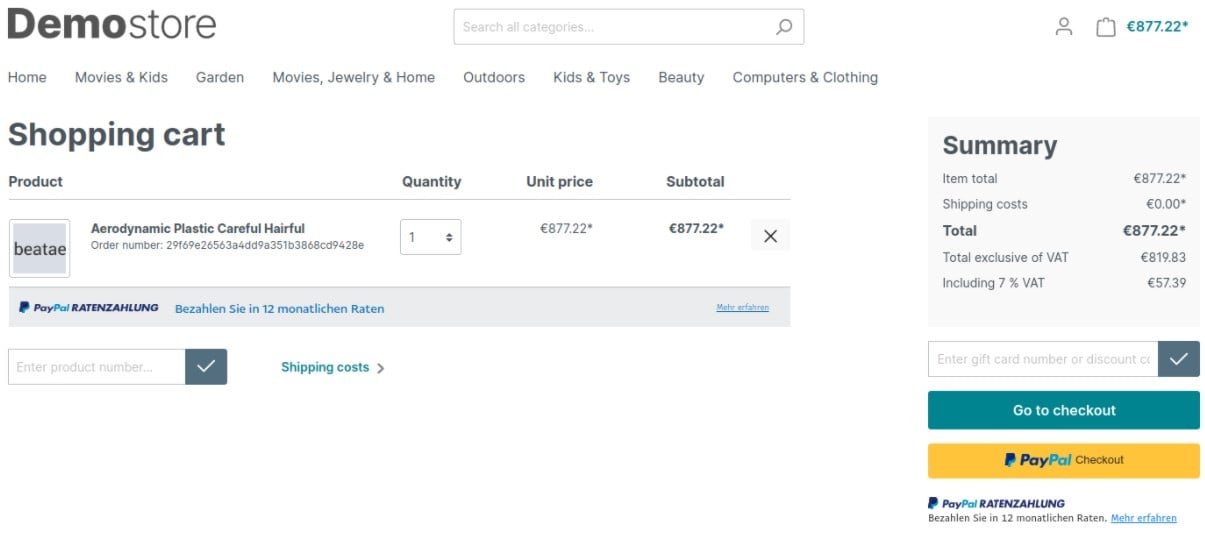
is built into the platform by default. You can leverage its functionality to accept payments of different types. The plugin connects your storefront to PayPal Plus, Express-Button, Pay Upon Invoice, and Installments. Thus, the top online payment method is always available on your website, dramatically improving your clients’ shopping experience. Another notable benefit is the ease of integration. It doesn’t require any technical expert knowledge!
Alternatively, you may use any third-party module that provides similar or extended functionality in this area.
Shopware 6 Stripe Integration
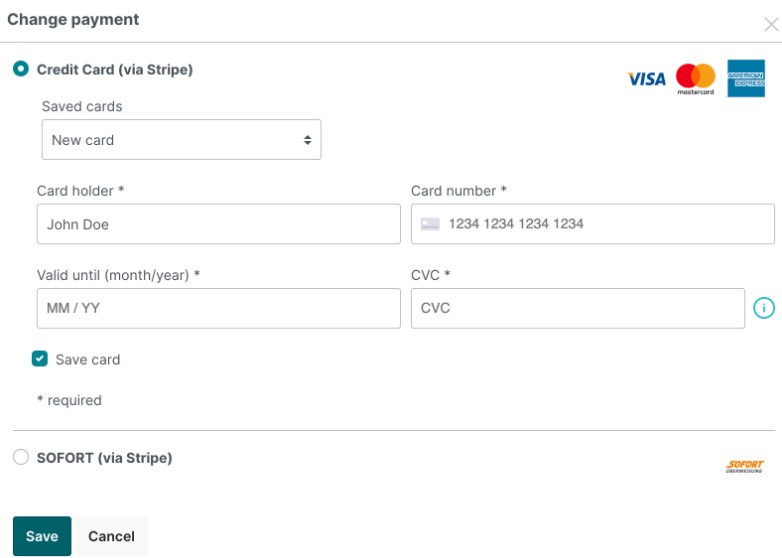
It is hard to imagine card payments without . And you can easily integrate this global platform with your Shopware 6 website to accept all major debit and credit cards in 135+ countries. Various local methods are included as well. You can leverage Klarna, Giropay, Ideal, Bancontact, etc.
In addition to payment processing, the plugin also simplifies refund management. Besides, it contains integrated fraud protection and provides up-to-date payment details for real-time accounting.
Shopware 6 Google Shopping Integration
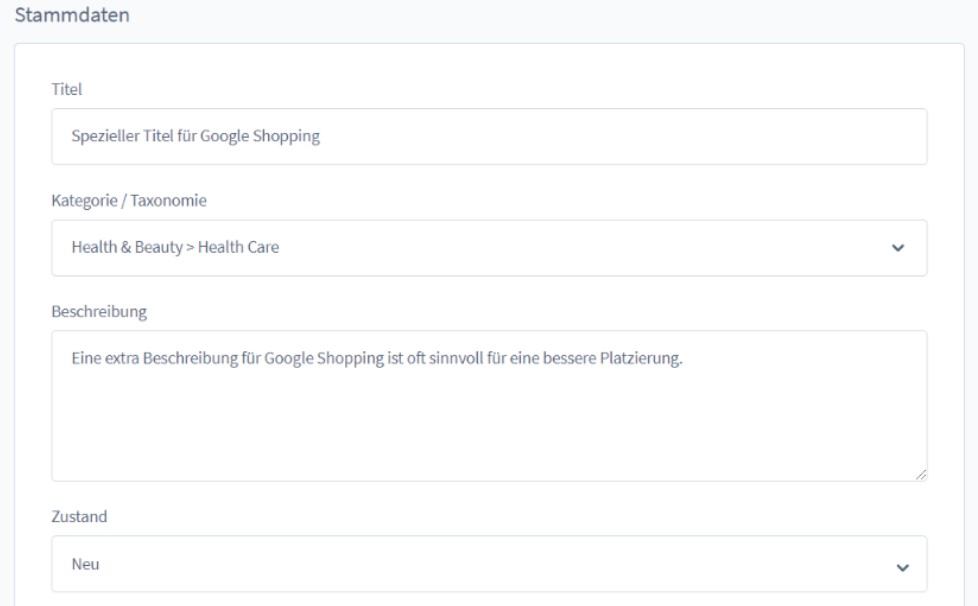
The integration with one of the best-known product search engines is under your disposal too. The lets you connect your store to the external platform and specify the data you want to move there. Create a custom feed within a few clicks, eliminating various manual actions due to predefined templates.
Shopware 6 DHL Shipping Integration
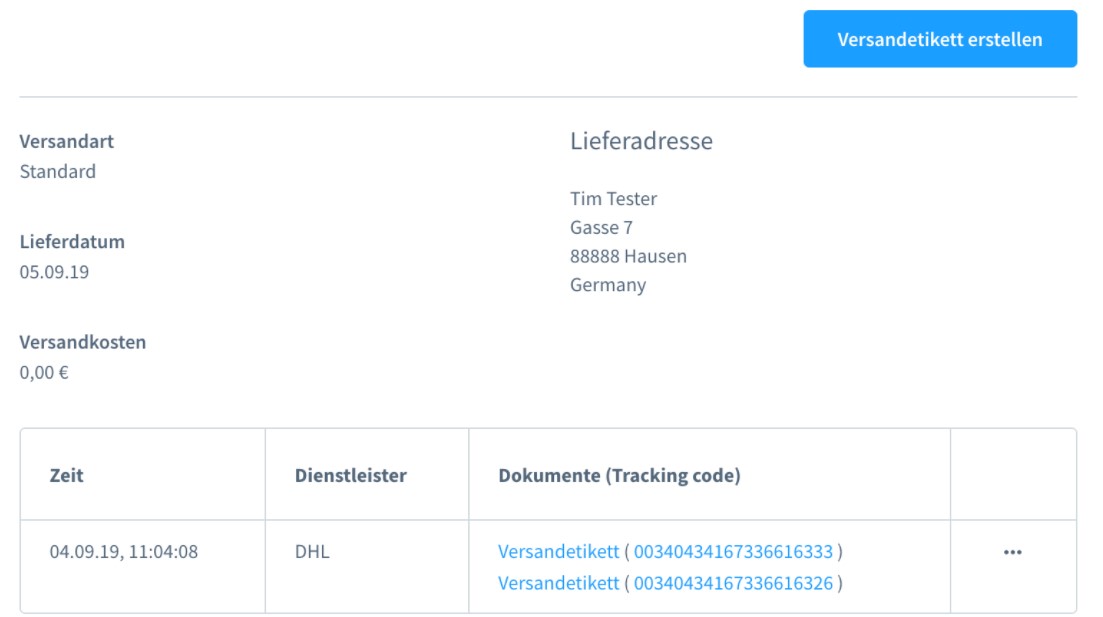
is the next important extension we’d like to draw your attention to. It simplifies how you create shipping labels, integrates your e-commerce website with the DHL business customer portal, and syncs assigned tracking codes.
At the same time, you can find extensions to integrate your storefront with other shipping providers.
Improved Import & Export for Shopware 6
The Firebear team is actively working on a robust import/export solution for Shopware 6. It will be a revolutionary instrument that will help merchants transfer any data between the platform and external systems in a fully automated manner. Contact us for further information.
Shopware 6 SAP Integration
Another tool that we will reveal in the nearest future is the Shopware 6 SAP Integration extension. It will enable the interconnection of the two systems with a seamless data exchange between them. As a merchant, you will only have to configure the integration once. Next, the module will do all the work for you. Contact us for additional detail.
Shopware 6 PWA
There is only one official progressive web application available for Shopware – it is Shopware PWA. It represents a modern way of building fast, reliable, and accessible e-commerce websites, following the latest technologies. The best thing about Shopware PWA is that you can add it as a plugin to Shopware 6, creating another sales channel. Of course, it also acts as a replacement for the default storefront since both Shopware PWA and Shopware 6 are based on the headless architecture.
So, what are the core features of Shopware PWA? Like other similar solutions, it utilizes the following functions:
- Organic search. Shopware PWA makes your website friendly for both search engines and customers.
- Offline browsing. Prospects can browse your catalog even when an internet connection is disrupted. However, the storefront should be uploaded to their devices first.
- Screen icon. With the Shopware PWA, your e-commerce storefront is no longer a website in a browser. Now, it is an icon that exists on a home screen.
- Top-notch Performance. The PWA nature lets you increase your site speed. At the same time, the current bounce rate goes down.
- Push notifications. Always reach your customers right on their devices with push notifications.
As you can see, nothing special is associated with Shopware PWA. However, all the above features provide a substantial influence on the efficiency of your e-commerce storefront. Since they improve engagement and conversion, you achieve an increase in revenue.
Shopware vs. Magento
According to the following materials, Shopware is faster than Magento in most use cases: & . To make the long story short, we offer performance test results in the following table and diagram:
| Magento 2 | Shopware 6 | |
| Home Page | 125 | 185 |
| Category Page | 270 | 152 |
| Simple Product Page | 251 | 107 |
| Configurable Product Page | 272 | 111 |
| Empty Cart | 167 | 79 |
| Add to cart AJAX | 380 | 60 |
| Cart Private Section/Block Ajax | 249 | 40 |
| Search | 264 | 111 |
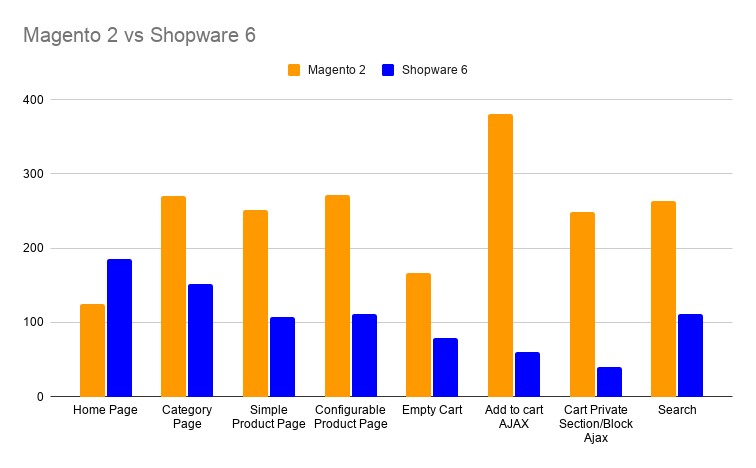
However, a single study is not enough to prove that Shopware is better than Magento. It is necessary to conduct several surveys run by independent parties. We can only conclude that both platforms have many similarities, but there is still a huge gap between them. And while it is possible to fill in technology breaches in a relatively short period, building a loyal community with reliable agencies and robust extension vendors takes years.
Vinai Kopp, a famous Magento expert, developer, and trainer, offers another important reason to move to Shopware. While Magento 2 goes to a more commercialized and enterprise dimension, it loses a certain freedom degree. The system becomes more complicated, meaning that you need to work for bigger companies to implement your creative ideas. Shopware 6, in its turn, looks like Magento years ago but with all the modern technologies on board. Thus, you get the ability to unleash your coding potential with no borders. Behold with your own eyes!
Welcome to the community 💙
— Shopware Developers (@ShopwareDevs)
If you are a Magento developer who wants to dive deep under the platform’s hood, follow this official guide: .
Final Words: Reasons to Choose Shopware 6
Below, we gather all the best things about Shopware 6. These reasons are enough to choose the platform if you didn’t decide yet where to build your e-commerce website. Furthermore, they may be enough to migrate to Shopware 6 from other platforms. The reasons for Shopware6 being my personal favorite are listed below:
- Top-notch Shopping Experience. While most e-commerce platforms describe themselves as places where merchants can build an emotional connection with customers, Shopware provides all the necessary instruments for doing that. Depending on your project’s complexity and business goals, you choose the edition that suits your demands and start impressing prospects.
- Admin-friendly Content Management System. As a store administrator, you don’t need much effort to impress your potential buyers. Shopware 6 offers intuitive CMs instruments that are easy to master and control. Create beautiful landing pages and rearrange your product catalog the way you imagine them.
- Intuitive Product Management. Furthermore, the system lets you manage products in a few clicks. The intuitive and powerful backend interface enables you to create as many variations as necessary. The process is simplified to the maximum extent so that there is no need for reloads!
- Powerful & Easy-to-manage. Shopware offers a system of rules that are easy to create and manage. The platform’s intuitive interface lets you generate any conditions to follow: shipping rules, cart rules, catalog rules, etc. They seem as powerful as the ones available in Magento 2. However, it is even easier to configure the corresponding sections in the admin.
- Growing Ecosystem. More and more Shopware plugins appear daily. This situation looks like the one that happened after the transition to Magento 2: the entirely new platform required vendors to rebuild their products, and it took some time to fill in the vacuity associated with the new ecosystem. Just like Magento 2 extensions, Shopware 6 modules are being developed at a rapid pace.
- Sales Channels. Shopware 6 is developed to leverage numerous sales channels. The platform helps merchants push products to each one without any extra effort. Thus, you can target the right customers via social media, POS, marketplaces, or e-commerce storefronts, synchronizing all this information in your Shopware 6 admin.
- Headless Style. The platform is developed with PWA standards in mind. It lets you separate the core and put any storefront on top of it with the minimum effort. Shopware 6 delivers fully functional APIs for both frontend and backend becoming highly friendly for PWAs and mobile apps.








